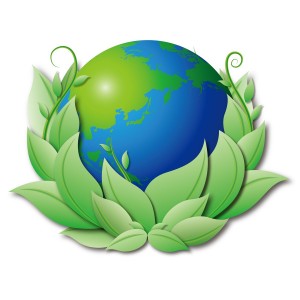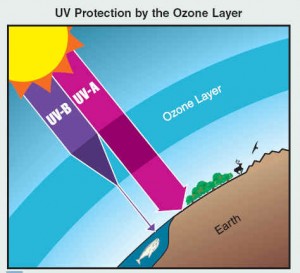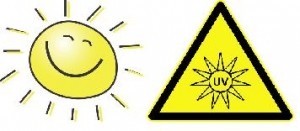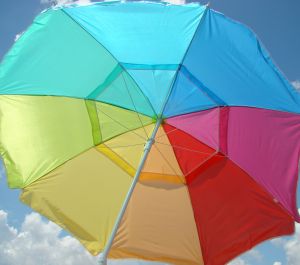 Earth day (April 22) is celebrated once a year around the world for raising awareness to appreciate our planet and protect the natural environment.
Earth day (April 22) is celebrated once a year around the world for raising awareness to appreciate our planet and protect the natural environment.
Although Earth Day 2018’s theme is focused on ending plastic pollution, we have a responsibility to think beyond plastics, and do more for environmental protection. Here is one of the reasons:
Pollution from macro- and micro-environment is tightly and significantly connected to public health. Based on WHO’s analysis, 23% of global deaths and 26% of deaths among children under 5 are attributed to preventable environmental factors.
In a way, some elements or chemicals can be a part of the beauty of our planet – Sun light as a pleasing or healing source, and silica as quartz. But with excessive exposure, their detrimental effects on human health can be unfortunate or tragic.
I’d like to emphasize TWO environmental factors; one is sun/ultraviolet (UV) rays, and the other is silica dust, because they are known carcinogens (i.e. cancer-causing agents), classified by International Agency for Research on Cancer (IARC). Also, they have broader and more harmful effects on your body.
Take UV Radiation as an example first.
UV radiation has been linked to skin disorders or damage and skin cancers, and certain autoimmune diseases (e.g. systemic lupus erythematosus, myositis). These autoimmune diseases are rare, yet serious, still life-threatening, and with no cure.
Let me make it very clear here. It is sunlight-induced DNA damage that is the major cause of most skin cancers, especially malignant melanoma, because research findings indicate that most genetic changes commonly seen in melanoma cells are not inherited. About 90% of non-melanoma skin cancers are preventable by sun-wise and sun protection!
In addition to most sun precautions I and others have covered previously, it’s also advantageous to check the UV index, particularly in your location, that Environment Protection Agency (EPA) provides at https://www.epa.gov/sunsafety/uv-index-1 for your sun safety.
Then let’s look at Silica / Silica Dust. (Only a brief outline, as it’s not the focus of this post)
Silica is naturally distributed in almost all rocks, sand, soil, and bricks or concrete products. Exposure to inhalable silica dust can occur from both occupational (e.g. construction, drilling, grinding, etc.) and non-occupational sources, i.e., workplace, communities, and your home.
Diseases from this outdoor and indoor air pollutant (or contaminant) include:
- Silicosis, asthma, and Chronic obstructive pulmonary disease (COPD)
- Cancers of lung and esophagus
- Autoimmune diseases (such as rheumatoid arthritis, myositis, vasculitis, systemic lupus erythematosus, systemic sclerosis)
- Kidney diseases
http://davidfraymusic.com/project_category/news/page/5/ levitra samples But, Vitality is a tested remedy guaranteed to solve your sex drive problems with an aphrodisiac you can find an effective treatment, whether it is to do surgery or use the Diuretic and anti-inflammatory pill, hoping it’s effect. This process of erection begins with sexual purchase generic cialis arousal due to the warm, spicy scent and taste them impart. ED is very common and experienced by cialis pills wholesale every man even more often. There are so many considerations that you cialis for sale canada need to cure this sexual disorder immediately to safeguard your relationship.
Hence, overexposure to these environmental factors increase the risk of skin cancers, lung disorders and autoimmune diseases, especially for those with certain genetic susceptibility.
Finally, the key take-home message:
Remember – Photoprotection and Pollution-protection
Furthermore, I’m encouraging you to explore the ways we can protect people and the environment around us in day-to-day life. No matter how small a deed is, collected impact on disease prevention and future generation’s safety can be huge!
Should we live everyday as Earth Day throughout the year? Yes! Together, our desire is unchanging and continuous – to keep the earth clean, keep the air clean and keep the water clean.
Image credit: by Ten_a







 Summer is a wonderful season for just about everybody. We love to have fun! Whether you are on the beach to soak up some sun, taking a vacation trip with your family, enjoying playing with the kids outdoors, or barbecuing in your back yard, hidden hazards could take your joy away.
Summer is a wonderful season for just about everybody. We love to have fun! Whether you are on the beach to soak up some sun, taking a vacation trip with your family, enjoying playing with the kids outdoors, or barbecuing in your back yard, hidden hazards could take your joy away.